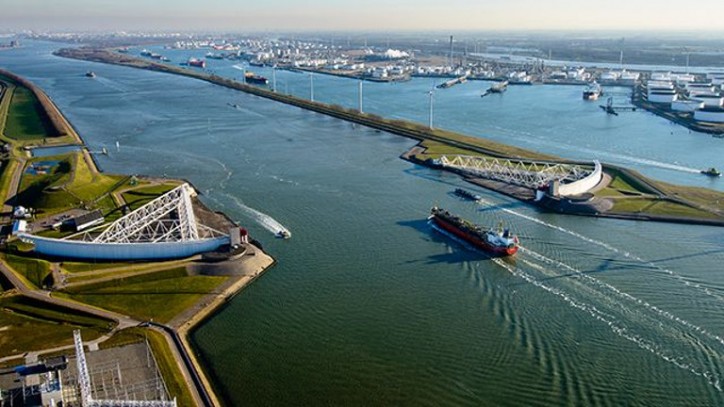The Directorate-General for Public Works and Water Management (Rijkswaterstaat) and the Port of Rotterdam Authority are to deepen the Nieuwe Waterweg and the Botlek. A tender for this was issued this week. The work will involve a one-and-a-half-metre deepening along a 25-kilometre stretch of waterway between Hoek van Holland, the Benelux Tunnel and the adjoining Botlek port. It is a necessary step which will improve accessibility to the Botlek ports. The deepening will begin in the spring of 2018 and will go on for around six months.

The deepening of the Nieuwe Waterweg and the Botlek fits in with the policy set out by the Port Authority and Rijkswaterstaat because they work together at optimising the accessibility of the Rotterdam port area, the sustainable development of the port and the excellent quality of the waterways network.
‘Medium-sized tankers and dry bulk carriers are getting bigger. The deepening will allow the New Panamax and Aframax ships to navigate the Nieuwe Waterweg without any restrictions,’ according to Willy Dekker, Network Director at Rijkswaterstaat. ‘To maintain the vitality of port industry in the Botlek, we need to invest in the preservation and renewal of this old port area,’ said Ronald Paul, COO at the Port Authority.
Deepening
The deepening will encompass three different contract depths. The depth of the Botlek will go from ≈ 14.5 m (New Amsterdam Water Level (NAP)) to ≈ 15.90 m. Along the Nieuwe Waterweg, the first stretch from Hoek van Holland to Maassluis will de deepened from ≈ 15m to ≈ 16.20m. The second section up to the Benelux Tunnel will have a guaranteed depth of ≈ 16.40m. It used to be ≈ 14.5m. The additional 20 centimetres are connected to the lower salt content in the Nieuwe Waterweg which means ships need a greater water depth. After the deepening, ships with a draught of 15 metres will be able to sail into the harbour under normal circumstances. Ships with a draught of 14.90 metres can already sail through the new Panama Canal, so New Panamax ships will be able to reach the Botlek without any restrictions.
No disruption
The dredging work will take place in the same way as regular maintenance dredging in the ports and along the river. There will be no extra disturbance to the surroundings, shipping or the workers at the port. As part of the project, compensation will be offered to affected water boards for precautions against any salinisation that may occur due to the salt water from the North Sea pushing further inland.
Nieuwe Waterweg
The Nieuwe Waterweg was constructed in 1872 under the direction of civil engineer Pieter Caland and forms the final section that connects Rotterdam with the sea. At the time, the length of the breach that was cut through the dunes near what we now call the Hoek van Holland was only 4.3 km. The Nieuwe Waterweg is affected by complex currents such as the ebb and flow of the tides, currents flowing inland and currents flowing towards the sea. For this reason, the depth of the Nieuwe Waterweg will also be maintained by constant dredging.
The Botlek
The Botlek was constructed between 1955 and 1960. This port is mainly characterised by the petrochemicals industry and tank storage companies. The first company to set up here was Dow Chemical in 1956, followed in 1957 by the Cornelis Verolme shipyard. By 1961 all of the land had been allocated.
Source: Port of Rotterdam